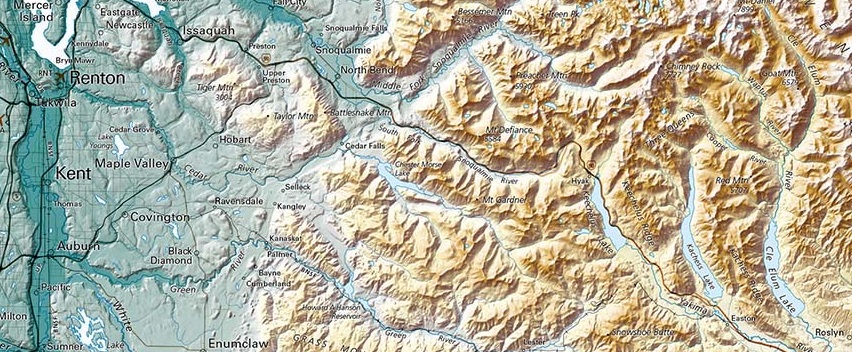
The Internet Age has altered the way just about everything works. Instantly-available on-line information and the devices to receive it have become universal, and the information itself is getting better all the time. That’s swell in some ways, but not in all ways and not for everybody. For one thing, it is dismantling the print industry, including the tiny part of it where maps used to live.
People are if anything MORE map conscious than ever, and on-line maps provide constantly updated and endlessly detailed information. The maps are almost all small (to fit the devices) and they’re free— loss leaders to bring in the customers. It’s tough to compete against free. So, where do paper maps fit in?
Mostly, the maps fit in a steadily dwindling niche. Road maps are still printed for older drivers who don’t have, or don’t like, in-car navigation systems. There are still road atlases, some of them very good. Hunters and fishermen (“hooks and bullets”, as the marketers call them) are still buyers and often need detailed maps in places cell phones don’t reach, but the shift to pre-loaded hand-held devices for that audience is already well advanced.
Wall maps are the exception. They require a lot more space then any hand-held device can offer, and they have a small but enthusiastic following (probably including you, since you’re reading this). They are no longer “hand-made” as they used to be, they are now produced using all the digital resources that are also behind on-line maps, but they serve the same purpose they’ve served for centuries. They’ll give you an understanding of a state or a region or the world that you can’t get any other way. Wall maps invite contemplation, and they offer learning.
And when we get it right, they are beautiful.
3.28.18

